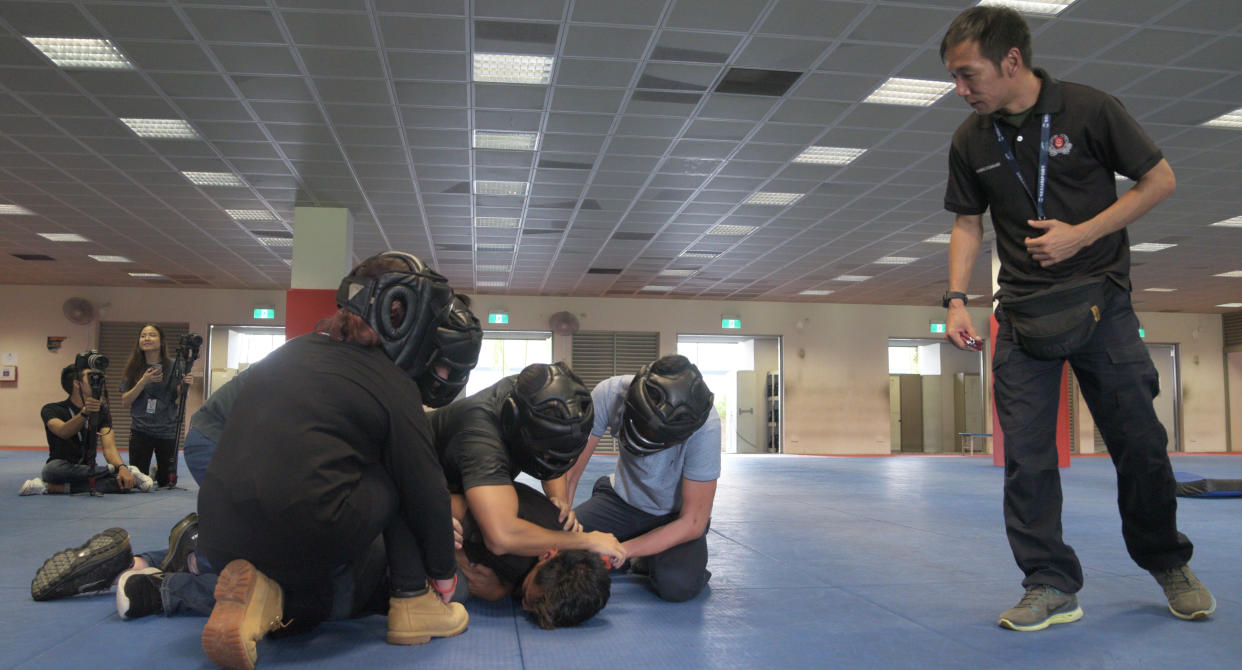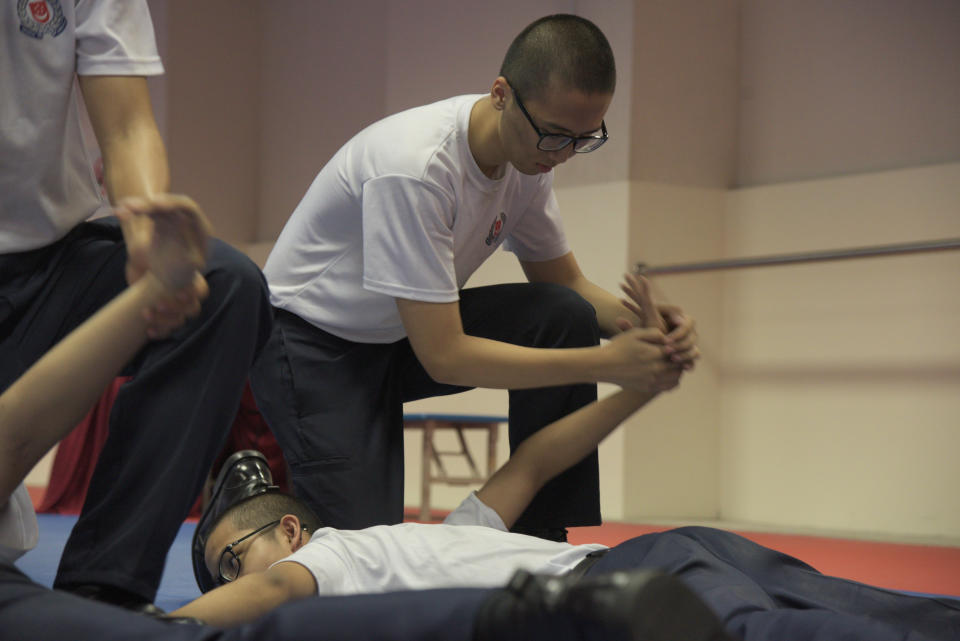Not like the movies: Police reveal challenges involved in making arrests

Unlike the dramatic police arrests we see in movies, the actual process of apprehending a suspect in real life is not as quick and effortless as it appears.
To better help the public understand the challenges that may arise when arresting a person, the Singapore Police Force (SPF) invited members of the media to attend a special demonstration session at the Home Team Academy on 16 May, during which they were taught the basic techniques employed during an arrest.
Non-compliant subjects can exhibit passive resistance, active resistance or outright violence, Superintendent Raymond Lo, commanding officer of the Frontline Policing Training Centre told the media during the event.
In apprehending such subjects, police officers employ a number of defence tactics such as rear wrist locks and arm bar takedowns. As a last resort in situations involving an armed or violent person, a taser or baton may also be used.
“We do have a few cases where the subject can turn violent all of a sudden or is violent right at the very onset. So the message to all our officers is don’t be complacent when you handle an incident, always expect the worse and be prepared for it,” said Lo.
To get a better understanding of what Lo said, members of the media were invited to participate in a simulated “real-life scenario” involving the arrest of a “drunk” and “unruly” man. It took between four to six participants to bring the man down and handcuff him.
Police officers here regularly face the threat of physical violence. For instance, a 42-year-old drug abuser was jailed on Wednesday for hurting three police officers while resisting arrest.
In 2016, a total of 210 police officers were physically abused while carrying out their duties. This number increased to 246 last year, said the SPF.

The increase in abuse against Home Team officers prompted Minister for Home Affairs (MHA) K Shanmugam to say that there will be “zero tolerance” for those who verbally or physically abuse officers. The MHA has thus been working with the Attorney-General’s Chambers to impose heavier sentences against people who hinder officers from doing their duties.
At present, anyone found guilty of using criminal force to deter a public servant from discharge of his duty can be jailed for up to four years, fined, or both.
Last year, an Australian man was jailed eight and a half months for a drunken tussle with several police officers at Changi Airport. Originally sentenced to six months and two weeks’ jail, Jason Peter Darragh’s sentence was increased on appeal by the High Court.
The prosecution argued that Darragh “publicly humiliated and taunted police officers” who tried to arrest him. Six police officers were needed to subdue the intoxicated Australian.
Lo explained that the process of arresting an uncooperative person may appear to take long because the police need time to reason with him or her.
“Sometimes what may seem very long (the process of arrest) is actually reasonable because we want to tell the other party to be compliant, to listen our instructions, and this takes time,” said Lo.
“We want them to use their soft skills, engage the other party and get their agreement, their commitment to follow instructions,” he added.



